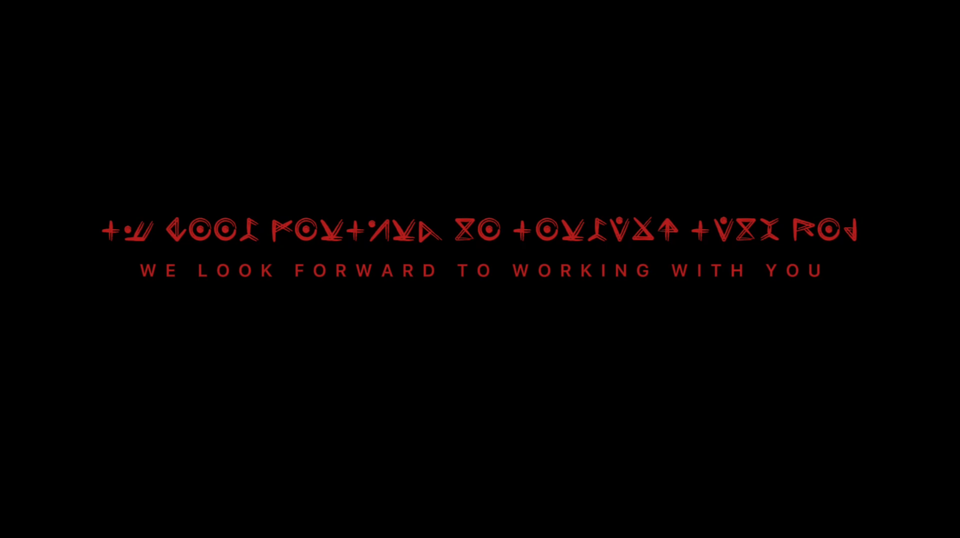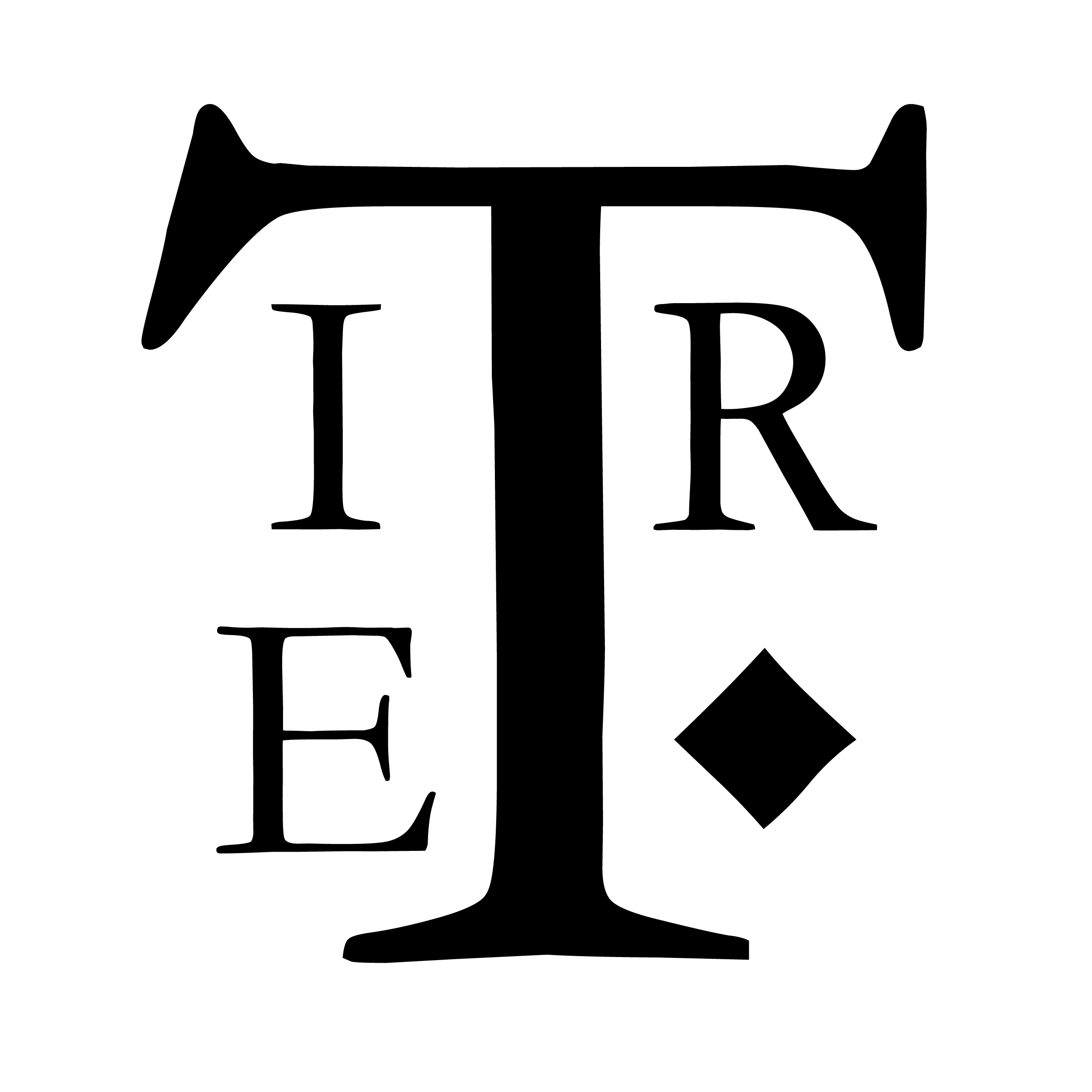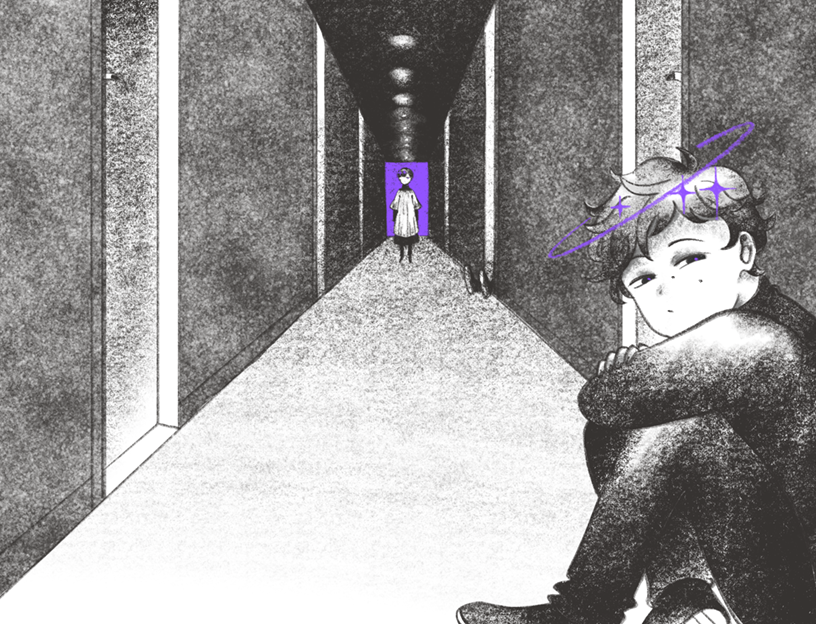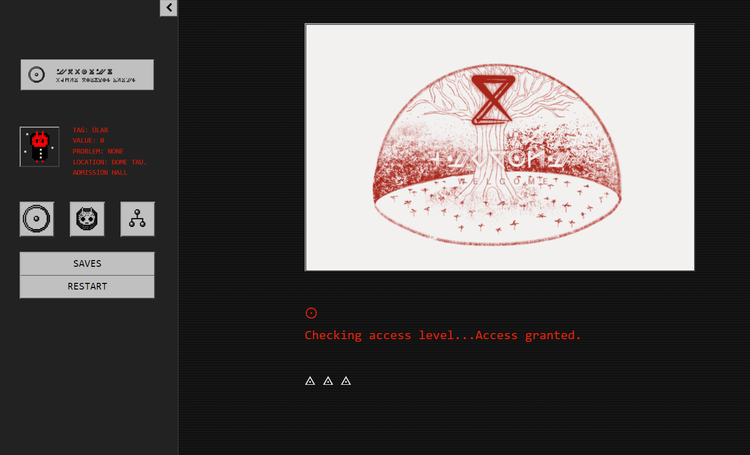All-Consuming

Body horror is something that I’ve been taught repeatedly since I was old enough to comprehend what anxiety and depression are. This may be a cliché, but clichés (like stereotypes) are mutated kernels of truth—and I’ve learned that my greatest enemy is often myself, or perhaps my shadow self.
Shadows, as a collective entity, are natural and need not be characterized as Other. The shadow side of our ego is something that we shouldn’t fear. But we should be attentive to its powerful influence nonetheless. We often submerge our truer, messier natures because they aren’t easy to navigate our current zeitgeist with. This late capitalist process isn’t merely a psychological disorder. Modern and Postmodern discussions of bodies under the survivalist strain of this paradigm mold and stratify us into rigid forms of thinking, equating individualism with freedom, when it is often anything but. Developer Etherane’s ethos resonates with me because they cleave through the scarred tissue of extreme individualism to reveal how interdependent bodies under late capitalism are categorized and isolated.
There’s a part of me, likely instilled by the archetypal rationality of the patriarchal Western world and its schooling, that thinks reason should be enough to remain in control of my path. But Etherane’s Mr. Rainer’s Solve-It Service (hereafter MRSIS) deconstructs that inner critic thoroughly. In MRSIS, the strange biotech world of Hjö is organized in a highly irrational fashion, with its privileged class of raincoat-hjörian’s stratified down to the fiber patterns of their symbiotic raincoat’s weave. The eponymous AI-life coach’s insistence on wellness only as a facilitator of productivity is also irrational, but all in Hjö’s society accept this irrational status quo. This is because all information is disseminated to them via a system that seems logical, both in presentation and language. The Echonet, which can interface directly with a user’s mind and impact them, is (not unlike our Web 2.0) a service that raincoat-hjörians share a parasitic relationship with. A user of the Echonet can be altered or damaged forever if they encounter malware, as well.
Anyone who knows how the rampant gamification and focus on infinite growth models of late capitalism work is aware such systems are bullshit. The networks our bodies house are constantly changing. It’s often joked online that “we live in a society” but we should really be speaking more plainly. We live in a system, one that exploits or rejects anything fluid enough not to fit in a binary package. If you cannot be commercialized, your body and the identity it contains (at least as late capitalism perceives these entities) are not validated or legitimized.
Body horror under late capitalism is recognizing that everything–including you–are consumable. MRSIS is a masterful depiction of how eerie and destabilizing that realization can be, as well as how diffuse the effects of that realization are. Late capitalism is constantly obfuscating our perceptions of oppression, making it nigh-impossible to resist the forces at work on our psyche and body.

First-time players like me might initially feel alienated from their POV as Ülar. He is told by Mr. Rainer that he is a being known as a raincoat-hjörian upon waking. Essentially a cross between a humanoid and a sentient raincoat, raincoat-hjörians are bio-techwear at its most sophisticated. At first feverish blush, Ülar is perhaps as unlike you as the world he is plagued by. This is key, because as the game positions you as an observer right from the “login” screen and constructs Ülar as a singular Other in the plot. But a few screens into MRSIS it’s nearly impossible not to find some empathy for Ülar’s plight. He’s inundated with a deluge of both physical and mental precipitation as Mr. Rainer downloads a hefty packet of lore and important runic symbols for them to digest. And despite being perpetually famished and exhausted, all that is prioritized in Hjö’s society is individual advancement and keeping the domes functioning. Ülar is partnered with Heino, a solver or problem-solving veteran, who uses his innate telekinetic abilities to advance at a break-neck pace in society.
Speaking of hunger, ingestion and digestion in MRSIS’ biopunk world are key tendrils undulating throughout Hjö’s various societal domes. Bodily functions are blown up to the scale of societal infrastructure, for instance. The map for a typical dome on Hjö resembles an esophagus and the main mode of transport, the metro, is basically a series of giant intestines which are subject to blockage (MRSIS’ more euphemistic term is “jam”). Ülar’s hunger is all-encompassing and the main driving force for him throughout the game’s different scenarios, second only to his intense loneliness.
Ülar is (or appears to be) a raincoat-hjörian that doesn’t ever quite mesh with the fabric of society, he is the quintessential Other. Every encounter he has with other Hjörians is either met with bemusement, or hostility (whether enacted through overt violence or sinister ulterior motives). Eventually, it is revealed that Ülar is another type of lifeform seeking self-preservation by mimicking a raincoat-hjörian–but he is not vilified for this.
The genius of Etherane’s writing in this inventive Twine game is that despite how elaborate its world-building seems at the outset, you soon become aware of their methods of “making strange” the trappings of our neoliberal hellscape. Being overwhelmed is the core of MRSIS’ narrative design. There are QS or Quick-Scan codes to click, data packages with many subscreens to peruse and endless lore to bone up on. Ülar, as your POV character, is adrift on a sea of jargon, competitive consumption, and bloody zero-sum game of meritocracy. raincoat-hjörians, as mentioned previously, are even typified according to the patterns of their raincoats’ weave, in an obtuse astrological fashion that’s both figurative and literal. And there is an aggressive tagging system that posits that anyone sharing the same ID as another Hjörian is not just an impostor, but likely an aberration that must be eradicated. On Hjö, impostor syndrome isn’t just a hindrance, it’s a justified paranoia which (if you are an entity that’s not easily classified like Ülar) keeps you hypervigilant against would-be executioners.
If you are willing to become haunted by the world of MRSIS, you will take some of its specters with you. Or perhaps you will discover these were specters you carried with you all along. You might even be a specter yourself. This game reminded me that a person’s value cannot (and should not) be manufactured or determined by external infrastructures. Especially not infrastructures that are constructed by dominant parties that fixate on unsustainable, metastatic growth.

The first ending I reached in MRSIS was “A Bouquet for all Raincoat-Hjörian Kind” and it emphasized Ülar’s despair at being unable to fit anywhere in Hjö’s oppressive society. He elects to end his existence and is led by Oskar, a guide to “everdeath” or afterlife, to a pit filled with the remains and possessions of raincoat-hjörians. Realizing that he’s not a raincoat-hjörian and that all there is left for him is endless consumption to attempt to fill the void inside, Ülar states that “the world is a present waiting to be opened.” Although he eats happily, there’s a sense that his consumption ironically embodies the sentiments of an earlier sequence in the game which equates the act with exploitation, deprivation, thievery, and destruction.
I am a queer, neurodivergent, and biracial demiwoman. There’s no true place for me within the rigid body of social texts the late capitalist system clings to so desperately. I empathize with Ülar’s sense of frustration and overwhelm as he tries and fails to navigate the strictures of Hjörian society. But unlike Ülar I also rejoice that I exist and operate within the margins. I am devoted to the margins, that’s where we of the marginalized are able to discern the toxic patterns of society’s weave, find loose threads to pull at, and ultimately unravel them.
One sequence in the game–written by what Echonet describes as an extremist group called Fabric of the Future–states: “All raincoats once existed as parts of the whole, sewn together by The Luminous Thread.” The dissolution of the raincoats’ united fabric by the rain dissolved the sutures that held them together as a collective. Since then, Fabric of the Future claims that individual raincoat-hjörians were wracked by loneliness and a lack of purpose. Although there are certainly some cultish overtones to the full sequence, I feel like the importance of community expressed is a powerful one. And the fact that such a sentiment is framed as an extreme view in a society like Hjö’s is telling. Alone, the marginalized will be overwhelmed, but collective understanding leads to revelations of how to move forward through society’s nested systems of oppression.




